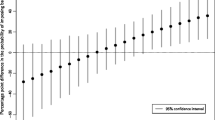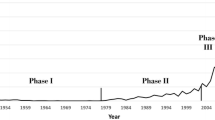Abstract
The paper examines the relationship between the supervision carried out in the municipalities by the main Brazilan supervisory institution (Controladoria Geral da União—CGU, in portuguese) and the incidence of dengue cases in them. Since the audited municipalities were randomized, this allows the identification of a control group that adequately represents the counterfactual of the treated group. The sample was composed of all municipalities that could be selected for that CGU inspection cycle, that is, 1520 municipalities, of which 70 were drawn and therefore belong to the study treatment group. We identified a negative effect of the policy on the incidence of the disease. However, when we consider a model with lags, we note that this initial impact from the drawing did not persist throughout the year of the inspection. Our analysis suggests that when federal resources are monitored, municipalities reduce irregularities, which may contribute to a decrease in the number of dengue cases.
Similar content being viewed by others
Notes
Initially, 70 of 1520 municipalities were randomly selected, but 4 municipalities were excluded from the sample due to delays in the implementation of the inspections.
These workers are responsible for surveying residences, deposits, vacant lots and commercial establishments to search for endemic foci. They must carry out careful inspections of water tanks, gutters, roofs, and applications of larvicides and insecticides. They also provide guidelines on animal censuses and the prevention and treatment of infectious diseases. These activities are essential to prevent and control diseases such as dengue, sores, leishmaniasis and malaria.
The discarded cases are those that were initially considered as suspected dengue, but that the laboratory diagnosis is negative for dengue, or points to another disease or the clinical diagnosis points to another disease.
The drawing for the municipalities that would be audited was held in May 2016.
(CID10) Datasus: monthly information about treated and untreated groups.
References
Angrist, J. D., & Pischke, J. (2009). Mostly harmless econometrics: An empiricist’s compansion. Princeton: Princeton University Press.
Avis, E., Ferraz, C., Finan, F., & Varjão, C. (2017). Money and politics: The effects of campaign spending limits on political competition and incumbency advantage (No. w23508). National Bureau of Economic Research.
Benelli, G. (2016). Spread of Zika virus: The key role of mosquito vector control. Asian Pacific Journal of Tropical Biomedicine,6(6), 468–471.
BRASIL. (2015). Ministério da Saúde. Secretaria de Vigilância em Saúde. Monitoramento dos casos de dengue, febre de chikungunya e febre pelo vírus Zika até a Semana Epidemiológica 45. Boletim Epidemiológico, vol. 46, no. 36.
Broutet, N., et al. (2016). Zika virus as a cause of neurologic disorders. New England Journal of Medicine,374(16), 1506–1509.
Centers for disease control and prevention-CDC. (2017). Disponível em: < https://www.cdc.gov/dengue/index.html>. Accessed 2017.
CGU. (2016). Relatório geral do 3 ciclo do Programa de Fiscalização em Entes Federativos, Estados, Distrito Federal e Municípios. http://www.cgu.gov.br/assuntos/auditoria-e-fiscalizacao/programa-de-fiscalizacao-em-entes-federativos/3-ciclo/3o-ciclo/arquivos/apresentacao-resultado_3-ciclo.pdf. Accessed 02 Feb 2018.
Economopoulou, A., et al. (2009). Atypical Chikungunya virus infections: clinical manifestations, mortality and risk factors for severe disease during the 2005–2006 outbreak on Reunion. Epidemiology and Infection,137(4), 534–541.
Ferraz, C., & Finan, F. (2008). Exposing corrupt politicians: The effects of brazils publicly released audits on electoral outcomes. The Quarterly Journal of Economics,123(2), 703–745.
Ganu, M. A., & Ganu, A. S. (2011). Post-chikungunya chronic arthritis—Our experience with DMARDs over two year follow up. Journal of the Association of Physicians of India,59(2), 83–86.
Granger, C. W. J. (1969). Investigating causal relations by econometric models and cross-spectral methods. Econometrica,37(3), 424–438.
Hazin, A. N., et al. (2016). Computed tomographic findings in microcephaly associated with Zika virus. New England Journal of Medicine,374(22), 2193–2195.
Holmes, E. C., & Burch, S. S. (2000). The causes and consequences of genetic variation in dengue virus. Trends in Microbiology,8(2), 74–77.
Imbens, G. W. (2004). Nonparametric estimation of average treatment effects under exogeneity: A review. The Review of Economics and Statistics,86(1), 4–29.
Lichand, G., Lopes, M., & Medeiros, M. (2016). Is corruption good for your health? Working paper.
Mlakar, J., et al. (2016). Zika virus associated with microcephaly. New England Journal of Medicine,2016(374), 951–958.
MS. (2017). Monitoramento integrado de alterações no crescimento e desenvolvimento relacionadas à infecção pelo vírus Zika e outras etiologias infecciosas, até a Semana Epidemiológica 38/2017. Boletim Epidemiológico, Vol. 48, No. 37. Disponível em: http://portalarquivos2.saude.gov.br/images/pdf/2017/novembro/16/2017-036.pdf.
Musso, D., Baud, D., & Gubler, D. J. (2016). Zika virus: What do we know? Clinical Microbiology and Infection,22(6), 494–496.
Olken, B. (2007). Monitoring corruption. Journal of Political Economy,115(2), 200–249.
Rasmussen, S. A., et al. (2016). Zika virus and birth defects—Reviewing the evidence for causality. New England Journal of Medicine,2016(374), 1981–1987.
WHO. (2009). Dengue and dengue hemorragic fever. In Fact sheet. World Health Organization, ed. (WHO).
World Health Organization (2017) Zika: Public Health Emergency of International Concern. Available at www.who.int/emergencies/zika-virus/en/. Accessed 19 Feb 2017.
Zamboni F. Y. B. (2012). Avaliando o avaliador: evidências de um experimento de campo sobre as auditorias da CGU. [S.l.]: [s.n.]. Thesis. Disponível em: <http://bibliotecadigital.fgv.br/dspace/handle/10438/10163>. Accessed 8 July 2017.
Author information
Authors and Affiliations
Corresponding author
Ethics declarations
Conflict of interest
The authors declare that they have no conflict of interest.
Rights and permissions
About this article
Cite this article
Benini Duarte, G., de Souza Melo, A. & Firmino Costa da Silva, D. Do government audits reduce dengue? Estimating the impact of federal monitoring lotteries program on dengue incidence. Int J Health Econ Manag. 19, 359–369 (2019). https://doi.org/10.1007/s10754-018-9259-7
Received:
Accepted:
Published:
Issue Date:
DOI: https://doi.org/10.1007/s10754-018-9259-7




